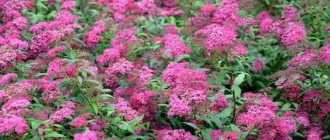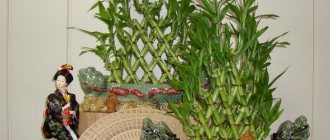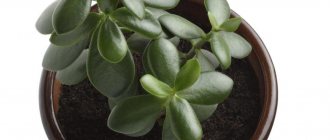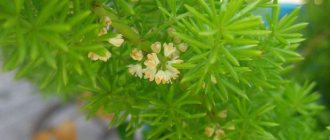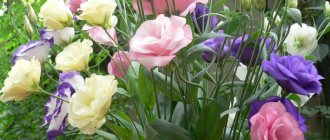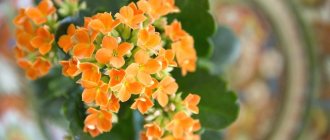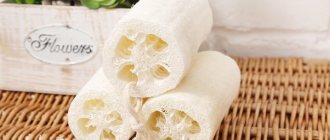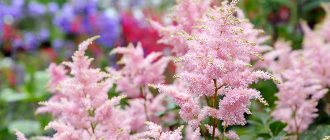Description of the bush
According to legend, the history of the name of this ornamental plant is romantic. During a voyage to the Far East - Asia in 1768, there was a young French woman on the ship, dressed as a boy. Her name was Hortensia. Later she became the wife of one of the expedition members. In honor of this young, brave lady, it was decided to name one of the recently discovered plants during a trip to Japan.
The Latin name comes from the word "hydrangeam", from the Greek words hydor - water and angeion - vessel, a combination of words meaning a container for water - which is why the plant is often called a water shrub.
The first specimens of hydrangea were brought from Japan by J. Banks to the botanical garden in Kew (England) in 1970. The shrub quickly spread throughout the yards and gardens of Europe. Since then, hundreds of varieties have been created in Germany, France, and the Netherlands. Varieties have appeared with completely different shapes and colors of inflorescences, adapted to unfavorable conditions, including those resistant to low temperatures. Since the appearance of representatives of a series of hydrangeas that bloom on annual and biennial shoots (the forever & ever series), the gardening world has become fascinated with these flowers.
Popular types
The genus has more than 50 species. The most famous types:
- Garden or large-leaved (Hydrangea macrophylla) - has the greatest variety of flowers in color. Because it blooms on last year's shoots, it blooms well only in the warmest areas of the country, although it can also be cold there for this type of shrub. The most frost-resistant varieties can survive down to -20 degrees C.
- Paniculata (Hydrangea paniculata Siebold) - tolerates drought and full sun exposure, has low soil requirements, blooms the longest.
- Tree (Hydrangea arborescens) - prefers more fertile and moist soil, blooms well in the shade.
- Petiolar (Hydrangea petiolaris) is a vine that climbs walls. Sometimes used as a ground cover plant with decorative leaves and flowers.
- Oakleaf (Hydrangea quercifolia) – the leaves are beautifully bleached in the fall. The shrub blooms on annual shoots.
- Serrata or Serrata (Hydrangea serrata) is a species with small flowers but good frost resistance.
- Ground cover (Hydrangea heteromalla).
- Ashy (Hydrangea cinerea).
This is interesting: The best varieties of paniculata hydrangea.
Most often we grow garden and paniculate hydrangeas. They are sometimes confused.
Differences between paniculata and garden species
| Sign | garden | paniculata |
| inflorescences | rounded, flattened | cone-shaped |
| flowering period | end of June – August | mid-July – mid-September |
Tree and paniculate hydrangeas can withstand severe frosts, and thanks to the setting of flower buds on annual shoots, their flowering is reliable.
Large-leaved hydrangea (garden) - description
This is the most popular species, much loved, but not the easiest to grow. In its homeland, Japan, the bush reaches a height of 4 meters. The plant is a dense shrub growing up to one and a half meters in height with large fleshy leaves, blooming in white, pink, red and, in special conditions, blue flowers. The color of hydrangea depends on:
- soil pH;
- applied fertilizers have a significant impact on color change;
- the petals of the bush lose water and gradually acquire shades of purple, green and brown, giving the plant a peculiar charm.
Garden hydrangea was once considered a seasonal house plant, and was grown in pots at home. Today it also decorates window sills, especially east or west windows, but only in winter. When spring reigns outside, pots and containers are moved into the garden and onto the balcony, into slightly shaded corners.
Large-leaved hydrangea is found in 2 varieties:
- the first - with spherical or flat inflorescences, in which all or almost all flowers are fruitful;
- the second - with disk inflorescences, in which sterile flowers are located around the fruitful flowers.
Under certain conditions, garden hydrangea flowers change color from pink to blue. This shrub does not have genetically blue flowers, but some pink varieties change color with certain care. Red, pink and white flowers require a substrate with a pH of 5.5-6. To achieve blue flowers, you need very acidic soil. This can be achieved by adding a significant amount of peat (pH 4-5). Mulching with pine needles, crushed bark of coniferous plants helps increase the acidity of the soil.
This is interesting! Previously, people advised burying a handful of rusty nails or copper wire under a hydrangea.
Before flowering, plants are watered 4-5 times a week:
- ammonium alum solution,
- aluminum sulfate solution,
- ferrous sulfate solution.
These solutions can be mixed with the top layer of soil. Today there is a wide selection of special flower fertilizers. You can also acidify the substrate with special preparations with a pH of 4.5-5.5. The formation of blue pigment in hydrangea flowers is explained by the fact that sulfates absorbed by plants from the substrate form, together with the dye contained in the plant sap, a blue tint.
The pink petals of the shrub contain pigments called anthocyanins, which turn blue when exposed to sulfates. Flowers of white varieties do not contain this pigment.
Varieties
| Name and description of the variety | Photo |
| "Sybilla" - pink flowers | |
| "Leuchtfleuer" - intense red flowers | |
| “Bouquet of roses” (Boquet rose) – blue or pink flowers | |
| "Mirai" - pink flowers | |
| Papillon – pink shades | |
| "Frau fujiyo" - pink flowers | |
| "Ayesha" - light purple inflorescences | |
| "Tricolor" (tricolor) - with variegated tricolor leaves | |
| "Nymphe" - white inflorescences | |
| “Magical revolution” – with tubular flowers |
In addition to multi-flowered varieties with large spherical inflorescences consisting only of fruit flowers, hydrangeas with sterile flowers surrounded by fruit flowers are interesting, for example:
- "Blue bird"
- "Blue sky"
- "Libelle"
Hydrangea paniculata
Latin name: Hydrangea paniculata
In the wild, Hydrangea paniculata can grow as a tree up to 10 m high, but in gardens it usually grows as a shrub up to 2-3 m.
This hydrangea is quite frost-resistant and can withstand winter temperatures down to −25 °C. Like all hydrangeas, in direct sunlight it loses its decorative effect.
The shape of the inflorescences is easy to guess from the name of the species - they resemble fluffy panicles.
When forming a tree-like hydrangea on a trunk, the main shoot is annually shortened to a strong bud, and the side shoots are removed into a ring. At a height of 1-1.5 m they begin to lay the crown. When grown in the form of a bush, all shoots are cut back to three buds in the spring.
Hydrangea of this species reproduces well by cuttings - the rooting rate of cuttings is 80-100%. They are cut in June-July.
Proven varieties of paniculata hydrangea:
- Bobo is a miniature bush up to 0.7 m high, the inflorescences change color from yellowish-white to pale pink, blooms in July-September,
- Grandiflora is a tree or bush up to 2.5-3 m high, large inflorescences change color from white-cream to white, pink and eventually become green-red at the end of flowering, blooms in June-October,
- Kyushu is a bush up to 3 m high, has large fragrant white inflorescences, blooms in June-September,
- Limelight - a bush 2 m high, large lemon inflorescences on strong shoots turn pink towards the end of flowering, blooms in July-September,
- Pinky Winky is a bush up to 2 m, large inflorescences change color from white to bright pink, blooms in June-September.
Look for other beautiful varieties of paniculata hydrangea in our selection.
- Hydrangea paniculata: the best varieties for the Moscow region with photos, names and descriptions
Chic plants for a chic garden - this is about paniculata hydrangea!
Choosing a place in the garden, soil requirements
This shrub is planted in a quiet, slightly shady place. The garden type of hydrangea prefers a sunny position or diffused light, while the petiolate type prefers partial shade. Direct harsh sun can burn flowers and leaves. To protect flowers from being burned by the sun, you should not plant shrubs near walls that heat up quickly. However, lack of light causes yellowing of the leaves and pale color of the flowers. In case of hot weather, caring for the shrub should include intensive watering.
The plant has the following soil requirements:
- Large-leaved hydrangea grows best in light, moist, well-drained soil.
- The soil should be slightly acidic (pH 5.5-6).
- The shrub does not grow well in heavy, clayey and flooded soils, often called cold soils.
Landing
Proper planting of hydrangea gives the plant a better chance of being established in a new location. The shrub will bloom poorly and may become sick in an improperly prepared planting site.
When to plant?
It is difficult to determine the best planting date. Hydrangeas are sold in pots and planted from spring to late fall (April to November). This shrub does not tolerate low temperatures very well, so it is best to avoid planting in late fall to give the plant enough time to take root and acclimate to its new location.
Since in our climate garden hydrangea species may not have time to take root before winter, the plant should be planted when it is dormant. It is better to plant in the spring, when the soil warms up - in late April-early May. If severe frosts occur, young plants need shelter.
Hydrangeas planted in spring require regular and abundant watering during the growing season. Planting in the fall helps reduce the frequency of watering, but creates a risk of freezing of the bushes. When choosing an autumn planting date, it is necessary to carefully protect young plants for the winter.
It is better to plant hydrangeas on cloudy days early in the morning, then the plants are not threatened by rapid temperature changes.
From the time of purchase until the time of planting in the soil, seedlings should be stored in shaded and wind-protected areas and watered regularly to prevent the root ball from drying out.
Soil preparation
- Before planting, the area should be cleared of stones, construction debris, and weeds, especially deeply rooted ones, should be removed.
- Soil with too high a pH (above 6.5) should be acidified with peat or mulch. It is worth bringing the soil pH to 4.5-5.5.
- Light soils, highly permeable, low in nutrients and humus are enriched with compost, rotted manure or peat substrate at a dose of 40-60 kg per 10 m² of substrate. The addition of organic matter increases the water capacity of the substrate, enriches it with nutrients, improves density, and creates favorable conditions for the development of the root system of the planted shrub.
- Immediately before planting seedlings in the ground, it is worth adding hydrogel, fertilizers and substances that improve the soil structure. The hydrogel increases the water capacity of the soil, so the soil stays moist longer and the plant is less susceptible to drying out.
- In the case of heavy and compacted soils, preparation should begin a year earlier. To lighten the soil structure, it is mixed with a 10-centimeter layer of pine bark, gravel, peat or compost, and dug in the fall to a depth of 20-30 cm.
Planting technique - step by step
- Dig a hole with the same depth as the flower pot and 2 times its diameter. Plants are often planted in a hole with a diameter of 60-70 centimeters and a depth of 40-50 centimeters.
- Spread a few centimeter layer of manure or compost, acidic humus and garden soil. The components are mixed in a ratio of 1:1:2. If hydrangea is planted on heavy soil, the bottom of the hole is covered with a layer of drainage 10-12 centimeters thick, made of coarse gravel, vermiculite, and small pebbles.
- The seedling and pot should be immersed in a container of water. When the soil is wet, carefully remove the plant from the container, making sure that the root ball does not fall apart. Roots that are too long or damaged must be cut off. Root pruning encourages stronger root growth, making newly planted seedlings better accepted.
- Hydrangeas are planted to the depth at which they grew in the container. Only on sandy and very loose soils are they planted 3-4 cm deeper. The planting density of bushes depends on the vigor of growth:
- If several bushes are planted, the distance between them, depending on the type, should be 70-100 centimeters. Then caring for hydrangea will be easy.
- Dwarf varieties are planted at intervals of 50 × 50 cm.
- Strongly growing varieties are planted at a distance of 100 × 120 cm.
Care after landing
After planting, the soil around the bushes is compacted and a small side is made in which water will collect. Then the planted plants should be watered abundantly, preferably with rainwater, so as not to increase the pH of the substrate. When the water is absorbed, the soil should be replenished if small roots are exposed. A layer of mulch 6-10 cm thick is poured around the planted bushes. Mulching the soil helps maintain moisture in it, ensures cooling of the roots in the summer and protects them from frost in the winter. In addition, organic mulch increases the humus content in the substrate and improves its structure.
For mulching use:
- compost pine bark,
- softwood sawdust,
- a mixture of bark and peat,
- oak leaves.
Low-growing ornamental groundcover plants with shallow roots can also be planted around the hydrangea for mulch:
- periwinkle,
- ivy,
- pachysandra apex.
How to land correctly?
The main advantage of this plant is its unpretentiousness. Even a novice amateur gardener can grow a beautiful bush. The main requirement of this shrub is the correct location.
The plant does not tolerate very dark places. It is best to choose the most illuminated place. Avoid planting shrubs in direct sunlight. The fact is that they have a detrimental effect on the external condition of the plant. Deep burns or complete absence of leaf blades can be observed on the surface of the leaves.
Reproduction is carried out by cuttings or dividing an adult bush. To do this, cut the lashes, the length of which is about 20 cm. There should be 3 buds on the trunk.
Planting material is planted in early spring in the first half of April. At this time, the plant is actively preparing for vegetative cell division.
To do this, prepare a shallow hole. The distance between adjacent bushes should be from 1 to 1.5 m. It is recommended to fill the planting hole with a mixture of sand and peat mixed together in a 1:2 ratio.
For quick rooting, you can add urea. It will speed up the process of regeneration of the root system. In addition, sulfur compounds and potassium compounds are added to the soil. They have a positive effect on the growth of hydrangea. The presence of calcareous substances in the soil has a detrimental effect on the well-being of this shrub.
At the time of planting, it is important to monitor the location of the root collar. It should be 1-2 cm higher from the ground level. After completion, the hole with the bush is watered generously with water. In order for the plant to quickly take root, it is recommended to pick off all the inflorescences.
Growing and care
Hydrangea is one of the most beautiful garden shrubs. Growing the plant is not very difficult, but in order for the bushes to bloom for a long time and beautifully, you need to perform several care measures.
Watering
Shrubs produce a lot of green mass and flowers, which requires constant replenishment of moisture. Often, lack of water causes leaves to wilt in hot weather, reduce flowering intensity, and weaken the plant.
During the summer heat, hydrangea should be watered regularly and intensively (preferably 2 times a day). The plant loves not hard water without excess calcium and magnesium salts.
Fertilizer
Hydrangeas have special requirements for fertilizers. Fertilizers should be a mixture of:
- ammonium sulfate,
- potassium sulfate,
- superphosphate.
During periods of strong growth, bushes should be fed even every 10-14 days. At the end of July, for good development of flower buds, special fertilizers for hydrangeas with a predominance of phosphorus and potassium are applied.
Natural fertilizers are rarely used. Manure applied under the bush should be well rotted, because hydrangea does not like fresh fertilizer, especially horse manure. There are multi-component fertilizers for hydrangea on the market in liquid and bulk form, for example:
- Florovit,
- Substral.
You can also purchase natural fermented manure.
Care in autumn, wintering
In order for the shoots to become woody, fertilizing is completed in mid-August and watering is gradually limited. When severe frosts occur, plants shed their leaves and go to rest. Systematic care of the bush also ends.
Garden hydrangea is only somewhat resistant to frost. Its flower buds have thin scales and therefore freeze more easily than leaf buds. It happens that in spring the plant is green, but does not bloom. In our climate, the shrub often freezes, so when caring for it, you should consider protecting the plants for the winter. To do this, the lower parts of the bushes are buried in soil, preferably mixed with bark, leaves, and sawdust. The upper part is covered with mesh or agrofibre. In case of severe frosts, you also need to wrap the shoots with agrofibre.
It is important! Covering the bushes is done after the first severe frosts, and not before.
Sheltering hydrangeas for the winter begins at the end of November. When the soil freezes to a depth of 3-4 cm, they begin to protect the plants from severe winter frosts. Covering too early will increase the temperature of the substrate and thus push the plants further into the growing season, which will lead to freezing of the bushes during the first severe frosts.
Remember! Before winter shelter of hydrangeas, dry shoots damaged by diseases and pests should be removed. It is also important not to prune healthy shoots - this is done in the spring.
Protecting hydrangea for the winter using agrotextiles - the bush is wrapped in 2-3 layers of fabric and tied with rope. It is better to use white agrotextiles that allow air and water to pass through. To beautifully cover a shrub in winter, you can tie a colorful ribbon on it or tie it with multi-colored thread (example in the photo).
Winter protective caps made of agrotextile can be purchased at garden stores. They already have thread sewn together with the fabric, so the hood just needs to be pulled over the hydrangeas and tied. Agrotextile caps come in different designs and colors.
Another solution for covering several bushes is to surround a group of bushes with an agrotextile fence. The fence is designed to protect hydrangeas from the wind and blow away accumulated snow from their area.
Other types of garden hydrangea, such as paniculata and petiolate, are characterized by high frost resistance.
Pruning - autumn, spring, summer
Hydrangea is pruned three times - in spring, summer and autumn.
- In the spring. It should be remembered that garden (large-leaved) hydrangea, unlike paniculate and petiolate ones, sets flower buds in the fall of last year; this species blooms on last year’s shoots. Therefore, in the spring, only frozen fragments of shoots are removed, and not completely, because the buds may be located in the lower part.
- In summer . Cut off all faded inflorescences at a height of 10 centimeters above the base, or just above the first upper leaves.
- In autumn, more intensive pruning is carried out. Leave annual shoots with well-developed buds. Young, thin shoots with weakly defined buds are pruned right at the ground. Thin and underdeveloped shoots are also removed from two-year-old branches.
Propagation by cuttings
Garden hydrangeas are easy to propagate - the plant is propagated by green cuttings taken from side shoots. The shrub can be propagated by seeds. However, from a practical point of view, propagation by cuttings is easier and results will be obtained faster.
The date of propagation by cuttings is from February to June. Until April, hydrangea cuttings should be stored under cover, for example in a greenhouse.
Cuttings are cut from non-lignified shoots 10-15 centimeters long with 2-3 pairs of leaves. The location of the cutting is not important in this case, since the plants take root easily and are cut both at the internodes and under the knot.
The cuttings are planted to a depth of 2-3 centimeters in pots or boxes with peat mixed with sand in a 1:1 ratio. The optimal soil temperature is 18-20 degrees Celsius, air temperature is 16-18 degrees.
To propagate hydrangeas, a lot of moisture is required, so the containers are covered with film or a jar. This creates a specific microclimate that has a positive effect on plant rooting. Seedlings need to be watered frequently to keep the soil constantly moist. It is also necessary to irrigate them even several times a day. If the room is warm, the cuttings will take root within a month. In order for the shoots to be strong, the cuttings must be provided with good lighting.
Transplantation of seedlings to a permanent place is carried out in August. In autumn, young plants are covered, first with a large pot or wooden box, and then with leaves.
Hydrangea requires frequent watering, especially after planting. The water should be as soft as possible, preferably without calcium salts. In the first year of growing season, the plant is watered abundantly every 2 weeks.
Growing from seeds
A fairly easy and affordable method of propagation, used, as a rule, by breeders when breeding new varieties, but it can be done at home. Although this method is very time consuming.
- Prepare a container or separate containers with drainage holes.
- Prepare the substrate from peat, leaf soil and sand 2:4:1. You can add organic matter, for example, humus, pine needles, sawdust.
- Sowing is carried out in the autumn.
- Do not bury the seeds, but simply sprinkle a small layer of soil on top.
- Moisten the soil thoroughly. It is recommended to spray rather than water to avoid washing away the seeds.
- Cover the container with plastic wrap or glass, which must be removed several times a day for ventilation.
- Place the containers in a well-lit, warm place with temperatures of +14..+22 °C.
- Moisten the substrate as it dries.
- When the first shoots appear, the cover must be removed.
- Picking should be done about 2 times: during the development of the cotyledon lobes and in early spring.
- In this case, hydrangea can be transplanted into standard individual pots (about 7 cm in diameter).
- The plant must be hardened off by taking it out in the summer to an open area, protected from direct sunlight and bad weather.
- In the evening the pots must be brought back.
- Hydrangea should be grown at home for about 2 years until fully ripe.
- Emerging buds must be carefully removed so that they do not interfere with development.
Diseases and pests
Although hydrangeas rarely cause problems, they can be attacked by several diseases and pests. Proper fertilizer and conditions in the growing area are very important for their health. Hydrangea diseases usually appear as a result of improper care. For healthy growth, bushes should be planted in lightly shaded positions, in areas with fertile, humus-rich, fairly moist soil with a slightly acidic to acidic pH.
Chlorosis
In soils with too high a pH, hydrangea develops leaf chlorosis, which manifests itself in a light color or yellowing of their tissues. Leaf veins remain dark green during chlorosis.
In case of leaf chlorosis, an acidifying soil fertilizer should be used (it is better to enrich the soil with acidic peat). Chlorosis can be prevented by using hydrangea fertilizers that contain all the macro- and microelements necessary for this plant, but with a low calcium content. The soil under the bushes should also be mulched with pine bark, which is also acidic and slowly decomposes, helping to maintain the soil pH lower. Pine bark also plays a decorative role. Iron chelates are very effective for chlorosis.
Sunburn of leaves
Sometimes hydrangea leaves can burn. In hot and sunny weather, the leaves located on the outside of the bush become yellow or brown, and some fall off. Hydrangeas are shade-tolerant plants, their leaves are sensitive to excess sun, so they can be damaged in very sunny places, on too dry soil. To prevent the leaves from burning, the plant should be given more shade and watered regularly.
Gray mold
The cause of another hydrangea disease, called gray mold, is overwintering the plant in the wrong conditions. Frequent rainfall and dense planting of shrubs also contribute to the development of this disease. Gray mold, caused by the fungus Botrytis cinerea, leads to rotting of buds and flowers, and death of the tips of shoots or individual leaves. The youngest leaves turn black and the rot spreads to the stem. The tops of old leaves turn brown and black. Some flowers may turn brown, and a gray coating of mycelium and spores appears on their surface. Infected parts of plants must be cut off and burned. For spraying, when fighting gray mold, fungicides are used:
- Topsin M 500 SC,
- Captan.
Leaf spot
When affected by this disease, spots of varying sizes appear on hydrangea leaves, usually round, first light brown, then brown and gray-brown, often surrounded by a red border. The leaves die.
To prevent the development of the disease, you need to avoid:
- excessive thickening of plants;
- wetting the leaves during watering (you need to water the soil).
The first leaves with spots should be removed and burned. In autumn, all fallen leaves should be raked to prevent them from becoming a source of infection in the following season. Affected leaves should not be put into compost; it is better to burn them.
In late autumn, the bushes should be sprayed with 1% rapeseed oil. If there are a lot of infected leaves during the growing season, it is necessary to use fungicides:
- Dithane NeoTec 75 WG),
- Systemik 125 SL,
- Topsin (Topsin M 500 SC).
Spraying is repeated 2-3 times with an interval of 7-10 days, using 2 alternating preparations.
Powdery mildew
The most dangerous is powdery mildew caused by the fungus Erysiphe polygoni, whose mycelium in the form of a powdery coating first appears on stems and inflorescences, causing them to die. Initially, the disease manifests itself in spots; over time, plaque can cover the entire leaf blade. Over time, the surface of the leaves becomes covered with a brownish coating. Infected leaves grow more slowly, and the apical shoots are deformed.
Having noticed the first symptoms, you need to remove the infected parts of the plant, and in the fall, carefully collect fallen leaves so that they do not become a source of infection in the next season. For spraying, the same fungicides are used as for controlling spotting. You can also use sulfur preparations.
Pests
Hydrangea may suffer from pest attacks, but they do not cause significant damage. Only two pests can be found on hydrangeas - aphids and spider mites.
- Sometimes aphids appear on hydrangeas. Aphids can be observed mainly on the tips of shoots and on the undersides of leaves, where they form large clusters of dark green to black wingless insects. Aphids sucking plant sap limit the growth of shoots and cause deformation of leaves and inflorescences. Insects secrete sticky honeydew, which contributes to the formation of a black fungal coating. For aphids, the bush is sprayed with insecticides - Pirimor (Pirimor 500 WG), Provado (Provado Plus AE).
- Spider mites feed on the undersides of hydrangea leaves from May to mid-August. The mite sucks the sap of leaves, causing yellow mosaic discolorations to form on the leaf surface. Initially, the spots appear along the veins of the leaves, then they can cover the entire surface of the leaf blade. Severely infected leaves turn yellow, brown at the ends, and fall off. To combat spider mites, you should use the drug Karate Zeon 050 CS.
Varieties of hydrangea grown in Russian gardens
- Anabelle is the most common of the tree hydrangea varieties. It was released quite a long time ago. The bush grows small and compact, its height is about one and a half meters. The crown is spreading and dome-shaped, reaching a diameter of 3 m. The stem is bare and gray in color. The leaves are very large, up to 30 cm in length, bright, rich green in color with a finely toothed edge. Until frost, the foliage retains its color. The flowers are white, round, about 2 cm in size, grouped into inflorescences-balls with a diameter of up to 30 cm. The flowering period is from early summer to September. The bush is characterized by rapid growth of up to 10 cm per year. Frost-resistant. Prefers slightly shaded areas.
- Grandiflora is a magnificent bush of tree-like hydrangea with a spherical crown, up to 2 m in height and up to 3 m in diameter. The leaves are green, ovate, up to 10 cm. It blooms in corymbose inflorescences of small flowers. During the entire flowering period from July to September, the color of the flowers changes several times. At first they are light green, then turn white, and towards the end they acquire a creamy tint. Growth per year is up to 30 cm. The plant prefers sunny places with slight partial shade. Grandiflora loves moist soil and does not tolerate drought. Moderately frost-resistant variety.
- The tree hydrangea shrub of the Sterilis has a rounded shape and reaches a height of 2-3 m. The foliage is green on top and has a bluish tint on the underside. The leaves are slightly serrated and up to 20 cm long. Its annual growth is about 20 cm. The inflorescences are dense, hemispherical in size, about 25 cm in size. The bush blooms with sterile light green flowers, which turn white over time. The plant prefers well-drained fertile soils, sunny areas with slight partial shade. The winter hardiness of the variety is average.
- Kyushu - a variety of paniculate hydrangea. The bush has a fan-shaped crown up to 3 m in size and grows up to 2.5-3 m. The stems are colored red-brown. The leaves, pubescent, rich green in color on red petioles, are ovoid in shape. White flowers are collected in a wide panicle 15-25 cm long. Sterile flowers up to 2-3 cm consist of 4 white petals, which later turn pink. Honey bush. The plant does not tolerate stagnation of moisture in the soil and strong dry winds. The variety is fast growing and prefers partial shade. Frost resistance is good down to -25 degrees.
Annabelle
Grandiflora
Sterilis
Kyushu - Vanilla Fraze is a very spectacular variety of paniculate hydrangea. It is a low bush with dark green foliage. The leaves are ovate and rough. It has very beautiful cone-shaped inflorescences up to 30 cm, distinguished by their color. At the beginning of flowering they are white, and by September the bottom of the cone-inflorescence acquires a pink-strawberry hue, and the top remains white. A fast-growing plant that recovers well after freezing. The shrub is able to withstand low temperatures down to –40 degrees.
- Lime Light is a fairly popular variety of paniculate hydrangea, memorable for its lime-colored inflorescences. Gradually, the color of the cone-shaped inflorescences acquires a light lemon or white tint, and by autumn it turns slightly pink. The foliage is velvety dark green. The bush has very strong stems that can support the weight of large inflorescences. The variety does not require various supports and tying. The plant grows up to 2 m in height and width. Growth per year is about 25 cm. Prefers sunny and moist areas. Frost-resistant, young bushes should be covered in winter.
- Pinky Winky - Belgian variety of paniculate hydrangea. The variety is famous for its bright colors of flowers and leaves. An important feature of the variety is its strong shoots, so the plant does not need support. The bush of this variety is small and compact, the crown has a rounded shape. The inflorescences are cone-shaped panicles of white color in autumn, acquiring purple tones. Their color changes gradually, which makes it possible to observe flowers of different tones in one panicle. The leaves are dark green and have pubescence along the veins. The foliage also turns red-purple in autumn. Young bushes need shelter during the cold season. Adult plants tolerate frosts down to -25 degrees.
Vanilla Fraze
Limelight
Pinky Winky
White Ball
Romance Blue
Endless Summer - White Ball is a frost-resistant bush of a large-leaved variety up to a meter high. It blooms with spherical inflorescences of snow-white color. The foliage is rich green and large. Flowers appear on young shoots and shoots from the previous year. Prefers sunny places with slight partial shade.
- Romance Blue is a winter-hardy variety of large-leaved hydrangea. The plant grows up to 1.5 m. It blooms on the shoots of the new and last season with spherical inflorescences about 25 cm in diameter. Double flowers of blue-blue hue. Leaves, elongated green. Loves sun, moisture and well-drained soil.
- Endles Summer - “endless summer”. The name was given due to the peculiarity of blooming not only on the shoots of the previous season, but on the shoots of the current year. The bush is small, compact, up to 1.5 m. Depending on the acidity of the soil, the color of the spherical inflorescences varies from blue to pink. The variety has good winter hardiness and does not require shelter.
Why doesn't hydrangea bloom?
Garden hydrangeas set flower buds in the second half of summer and bloom the following summer. Sometimes shrubs do not bloom for the following reasons:
- One of the reasons is freezing of the tops or entire shoots with flower buds set.
- Another reason why hydrangeas do not bloom is improper pruning. It must be remembered that hydrangea blooms on last year's shoots. Therefore, if you cut off woody stems with flower buds, the plant will not bloom in this season. For this reason, only shoots that have frozen after winter need to be removed.
Application in landscape
Hydrangeas look good even in small gardens. They are especially well presented against the background of dark green plants. All hydrangeas go well with the following types:
- ferns,
- hosta,
- noble liverwort,
- primroses,
- periwinkle,
- honeysuckle,
- shrubs with small leaves.
The plant can be planted in the ground or in decorative containers that can be easily moved or brought into a greenhouse for wintering. Hydrangeas planted in containers are transferred for the winter to a cool room with a temperature just above zero.

